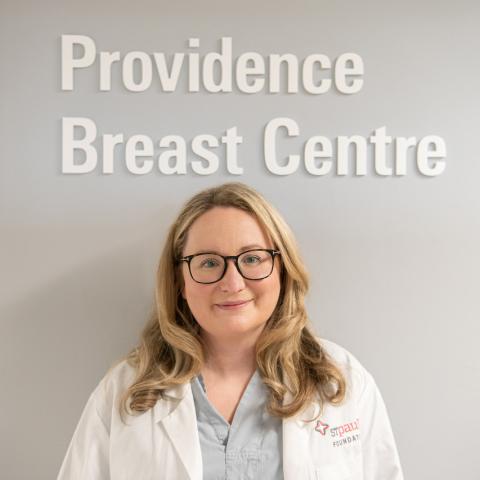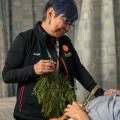Ultrasound
Learn about ultrasounds, how to prepare and what to expect.
Overview
An ultrasound scan is a test that uses sound waves to see inside your body. It is also called a sonogram.
Ultrasounds allow doctors to view abdominal organs. These include the liver, gallbladder, spleen, and kidneys. It is also used during pregnancy. A special kind of ultrasound called a doppler ultrasound checks blood flow.
Most ultrasound tests do not use radiation.
A sonographer is a health care professional who performs ultrasound examinations. Sometimes, a radiologist, nurse, or support aide are also present.
Types of general ultrasounds
Types of doppler ultrasounds
Preparing for the test
How you prepare depends on the area we are scanning. When you book your appointment, the booking staff will give you instructions.
On the day of the test
- Arrive early. If you are late, we may have to reschedule you for another day.
- Make sure you have enough time to find parking and check in at Medical Imaging.
- If you are unable to make the appointment, contact us as soon as possible to reschedule.
- Bring your government-issued photo ID and your BC Services Card (personal health number).
- You can bring a support person with you. They can stay with you before and after the ultrasound, but not during it. If you need a support person with you during the scan, let us know when booking your appointment or at time of check in.
During the test
Before starting the ultrasound, the sonographer will:
- Review your health history and the reason for your scan.
- Ask for your consent to do the scan.
- Dim lights in the exam room to make it easier to see the screen.
During the ultrasound:
- You will wear a hospital gown and lie on an exam table, either on your back or side.
- The sonographer will place some clear gel on your skin.
- They will move a transducer over the area to be examined. A transducer is a handheld ultrasound camera that records images.
- For some ultrasound scans, we need to place the transducer into a part of your body. For example, your esophagus, vagina, or rectum.
- The transducer picks up sound waves. It converts them into an electronic picture of your internal organs. You can see these pictures on a screen.
- The sonographer can make sure you are comfortable during the scan. They can answer questions regarding the exam itself but cannot discuss results.
Please note: You cannot take pictures or videos during the scan. If you want a copy of the images or the results, ask the receptionist how to get them.
Ultrasound scans usually take 30 to 45 minutes.
After the test
- When we finish the scan, you can wipe the gel off your body.
- We might ask you to wait in the scan room or waiting room while images are being reviewed.
- The results of your ultrasound scan will be sent to your doctor. This can take seven to 10 days.
- You will need to book an appointment with your doctor to go over the results.
Support for Indigenous Peoples
The Indigenous Wellness Liaison Team is here to support your health journey. Team members offer cultural support and healthcare advocacy. Learn more below or call them at 604-682-2344,62937 or email IWL@providencehealth.bc.ca.
Education & resources
Patient education
- Having an ultrasound (multiple languages)
- Having a Prostate Ultrasound (Transrectal Ultrasound or TRUS) [multiple languages]
- Having an Endovaginal Ultrasound Scan (multiple languages)
- Having a Prenatal Ultrasound Scan at 18 to 20 Weeks
- Ultrasound-Guided Thyroid Biopsy
- Ultrasound Kidney Biopsy
- Having an Ultrasound-guided Breast Biopsy (multiple languages)
- Pregnancy Of Unknown Location (Emergency Department) [multiple languages]
Useful resources
- HealthLink BC: Ultrasound
- HealthLink BC: Prenatal ultrasound
- HealthLink BC: Pelvic ultrasound
- HealthLink BC: Fetal ultrasound
- HealthLink BC: Breast ultrasound
- HealthLink BC: Thyroid & parathyroid ultrasound
- HealthLink BC: Doppler ultrasound
- HealthLink BC: Abdominal ultrasound
- HealthLink BC: Testicular ultrasound
- HealthLink BC: Cranial ultrasound
Find this service near you
-

Mount Saint Joseph Hospital
Radiology Clinic
3080 Prince Edward Street Vancouverkm
-

St. Paul's Hospital
Radiology Clinic
1081 Burrard Street Vancouverkm
-

Mount Saint Joseph Hospital
Providence Breast Centre
3080 Prince Edward Street Vancouverkm
-

St. Paul's Hospital
Maternal-Fetal Medicine Clinic
1081 Burrard Street Vancouverkm
Medical & professional referrals
Your doctor needs to give you a referral for an ultrasound.
